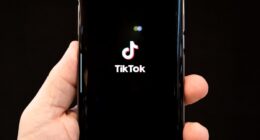The many steps a prospective customer takes before making a purchase are all included in the complex process known as the “customer journey” in email marketing. Usually, this process starts with awareness, when prospective buyers become aware of a product or brand. Email marketing is now essential for reaching new audiences with the brand. A well-written welcome email, for example, can establish the tone for subsequent communications while offering crucial details about the brand’s principles, goods, and services.
Key Takeaways
- Understanding the customer journey is crucial for effective email marketing
- Building a strong email list requires offering valuable content and incentives
- Creating engaging and personalized email content increases open and click-through rates
- Nurturing leads through email automation helps move them through the sales funnel
- Converting leads into customers requires a strategic approach and compelling offers
Because it establishes the foundation for a relationship with the customer, this first interaction is crucial. Customers move into the consideration stage as they continue on the journey, where they weigh their options. Here, valuable content that speaks to the needs and pain points of potential customers can be delivered through email marketing.
Customers can be assisted in making well-informed decisions by, for instance, receiving targeted emails that contain product comparisons, reviews, or case studies. Marketers can modify their email campaigns to appeal to recipients at every stage by comprehending the subtleties of the customer journey, which will ultimately increase engagement and conversion rates. The foundation of any effective email marketing strategy is a strong email list. It takes a calculated approach that puts quality above quantity to create this list. Making valuable resources like eBooks, whitepapers, or special offers that entice users to subscribe—known as lead magnets—is one efficient strategy.
A fitness company might, for example, provide a complimentary exercise program in return for an email address to make sure that their subscribers are actually interested in what they have to offer. By opting in for content that matches their interests, subscribers not only expand the size of the email list but also increase the chance of engagement. Also, keeping lists clean is just as crucial. Enhancing deliverability rates and engagement metrics can be achieved by routinely purging the email list of inactive subscribers.
Double opt-in procedures can also be used to make sure that email subscribers are actually interested in receiving them. With this approach, users must confirm their subscription by sending a follow-up email, which can drastically cut down on the list’s unengaged contacts. Marketers can develop a more focused and successful email marketing strategy by concentrating on developing a high-quality email list.
To draw in subscribers and build a relationship with them, you must create interesting and tailored email content.
For instance, an internet merchant may divide up its customer base according to previous purchases and offer tailored product suggestions that suit each customer’s preferences. This degree of personalization raises the possibility of conversions while also improving the user experience.
Apart from customization, email layout and design have a big impact on engagement. Emails that are visually appealing & include clear calls-to-action (CTAs), images, and videos can greatly improve user interaction. To entice subscribers to reserve their next trip, a travel agency may combine captivating storytelling with breathtaking photos of various locations. Also, by experimenting with various subject lines and content formats, marketers can gain valuable insights into what appeals to the audience and continuously improve their strategies. An effective strategy for nurturing leads at every stage of the customer journey is email automation.
Marketers can provide subscribers with timely & pertinent content by establishing automated workflows that take into account their past email interactions or website activity. For example, an automated follow-up email can remind a potential customer of the items they left in their shopping cart and provide an incentive, like a discount code, if they abandon it. This strategy not only helps restore potentially lost sales but also maintains the brand’s prominence in the consumer’s mind. Automation of lead nurturing also makes it possible to communicate consistently without overburdening marketing teams. With the help of automated drip campaigns, leads can be gradually educated & guided toward a purchase.
For instance, a software business may write a series of emails with guides and advice on how to use their product efficiently. Brands can maintain lead engagement throughout their journey and establish credibility & trust in their niche by consistently producing high-quality content. The ultimate objective of any marketing strategy is frequently thought to be turning leads into customers, and email marketing is essential to this process. Making offers that appeal to leads’ needs and desires is crucial to boosting conversions. Leads may be prompted to act by temporary promotions or first dibs on new items.
An e-commerce company might, for example, send leads an email with a flash sale on well-liked products, encouraging them to buy right away. Also, using social proof can greatly increase conversion rates.
For visual proof of product efficacy, a beauty brand may display before-and-after pictures of happy customers next to their merchandise. Social proof and compelling offers can be combined by marketers to craft a compelling story that converts leads into devoted clients. Email follow-ups following a purchase. Sending follow-up emails after a purchase to thank customers for their purchase and offer more information about their order is one tactic. To improve the overall customer experience, an online bookshop might, for instance, send out an email with suggested readings based on the genre of the book that was purchased. loyalty plans & special deals.
Email-based loyalty programs can also encourage repeat business. Brands can entice customers to repeat and interact with their products by providing special discounts or incentives for subsequent purchases. A chain of coffee shops may send out emails every month with updates on loyalty points or exclusive deals for their rewards program members. Strengthening the Customer Relationship. This strengthens the bond between the brand and its customers while also keeping them informed.
Long-term success is fueled by a devoted customer base that companies can cultivate through email marketing. To increase the efficacy of email marketing over time, it is essential to analyze and optimize the customer journey. Open rates, click-through rates (CTR), conversion rates, and unsubscribe rates are examples of key performance indicators (KPIs) that marketers should monitor using analytics tools. Marketers can find trends & patterns that guide future tactics by looking at these metrics.
For example, marketers can duplicate the success of specific subject lines in subsequent campaigns if they consistently result in higher open rates. Another useful technique for email campaign optimization is A/B testing. By trying out various components, like subject lines, content formats, or calls to action, marketers can learn what appeals to their audience the most.
For instance, comparing two different email design iterations could show which layout encourages higher conversions or engagement. Constant evaluation and improvement guarantee that email marketing initiatives stay pertinent and successful in satisfying client demands. Brands must take a comprehensive approach that incorporates the different tactics covered in this article if they want to succeed in email marketing over the long run. Creating interesting content that appeals to subscribers at every point of their journey is essential to complementing the foundation of building a robust email list.
Also, automating lead nurturing and emphasizing retention tactics will support the development of enduring client relationships. Maintaining relevance in a constantly shifting digital landscape also requires keeping up with changing consumer preferences and industry trends. Subscriber feedback should be continuously solicited by brands in order to better understand their needs and modify their strategies accordingly. Businesses may set themselves up for long-term success and growth in the cutthroat field of email marketing by utilizing data-driven insights and developing sincere relationships with clients through tailored communications.
If you are interested in learning more about email marketing strategies for the music industry, you should check out the article “Hello World” on musicmarketing.digital. This article provides valuable insights and tips on how musicians can effectively use email marketing to engage with their fans and promote their music. It complements the information provided in the Email Marketing Customer Journey: A Complete Guide, offering a more specific focus on the music marketing niche.
FAQs
What is an email marketing customer journey?
An email marketing customer journey refers to the process of engaging with potential customers through a series of targeted and personalized emails, with the goal of guiding them through the various stages of the buying cycle.
What are the key stages of an email marketing customer journey?
The key stages of an email marketing customer journey typically include awareness, consideration, decision, and retention. These stages represent the different points in the customer’s journey where they may need different types of content and messaging.
How can businesses use email marketing to guide customers through the customer journey?
Businesses can use email marketing to guide customers through the customer journey by creating targeted and personalized content for each stage of the journey, using automation to send the right message at the right time, and analyzing data to understand customer behavior and preferences.
What are some best practices for creating an effective email marketing customer journey?
Some best practices for creating an effective email marketing customer journey include segmenting your audience, personalizing your content, using automation to send timely and relevant messages, and measuring the performance of your campaigns to make data-driven decisions.
How can businesses measure the success of their email marketing customer journey?
Businesses can measure the success of their email marketing customer journey by tracking key performance indicators such as open rates, click-through rates, conversion rates, and customer retention rates. Additionally, businesses can use A/B testing to optimize their email campaigns for better results.









